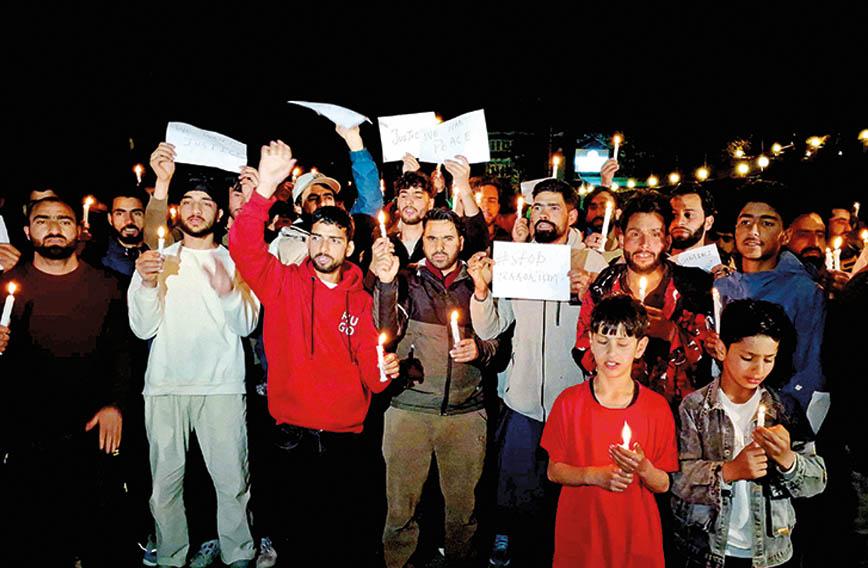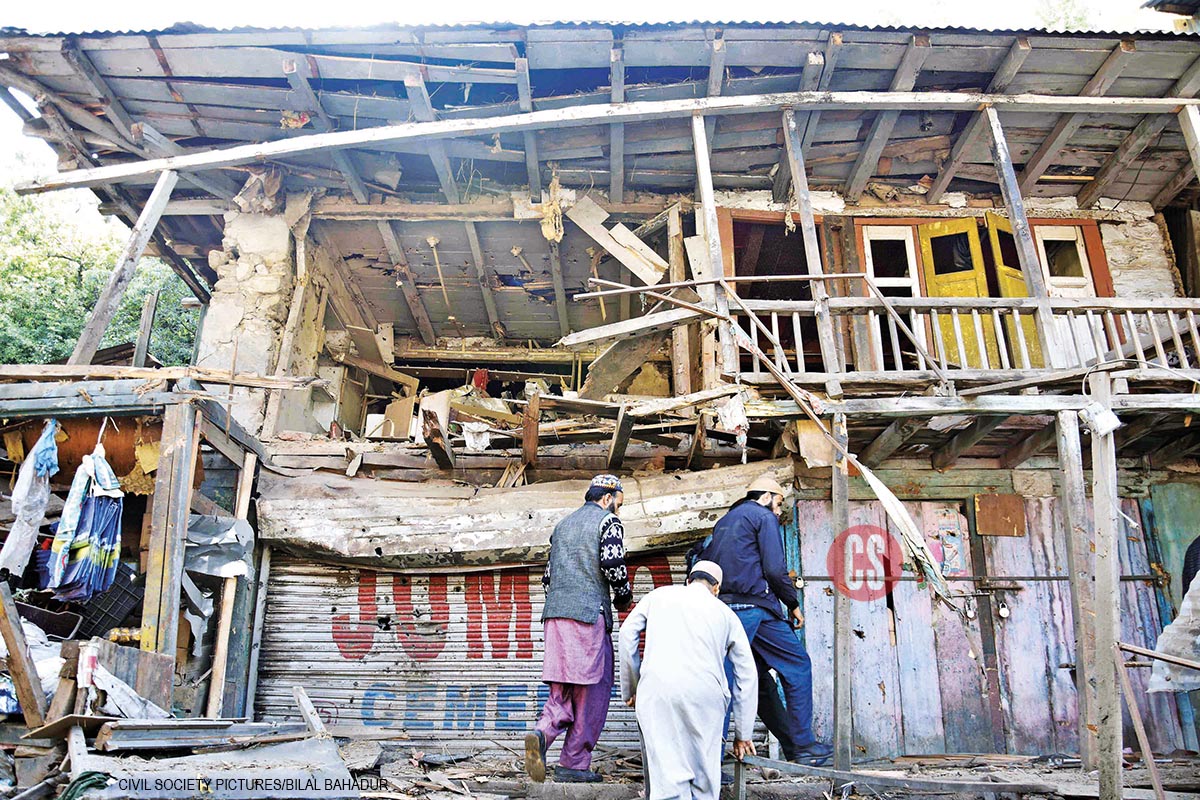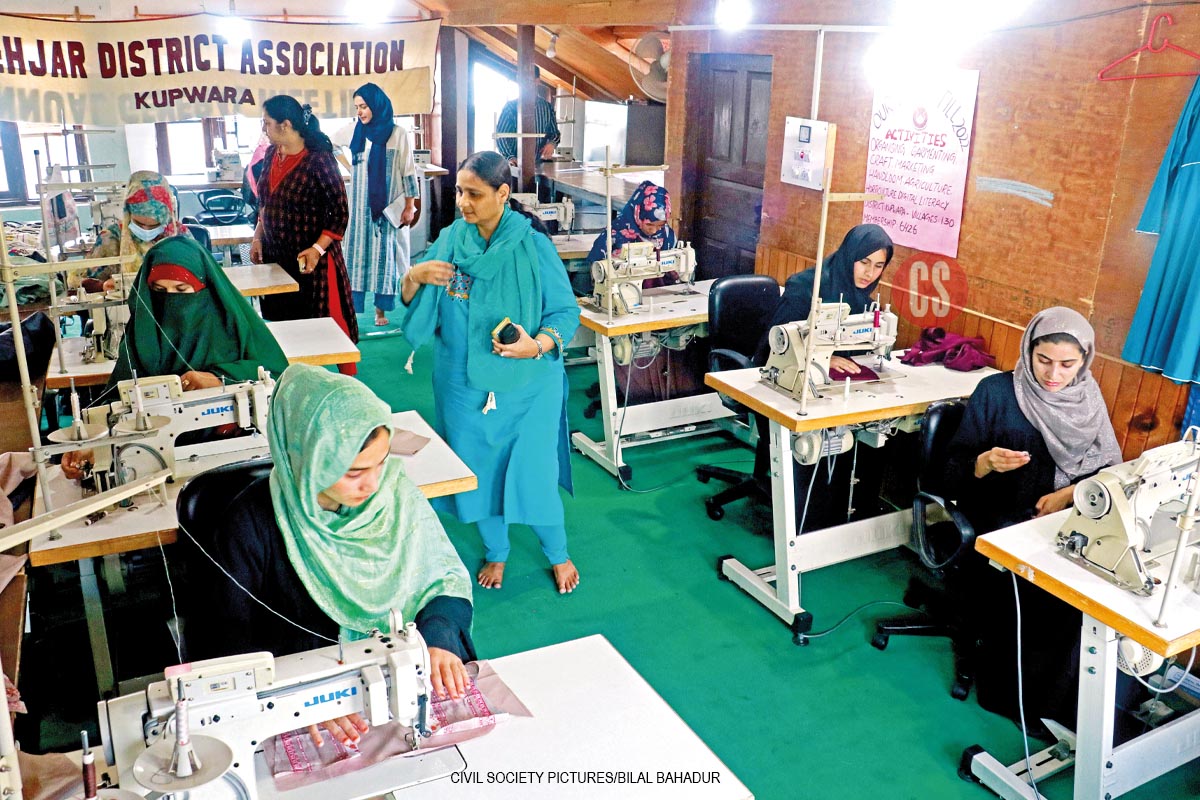
A candlelight protest in Srinagar
Beyond war and peace, people trapped in conflict zones
Rita and Umesh Anand
Of the many areas we prime ourselves to cover in this magazine, war is not one of them. There is little that we follow about military matters. No inside track do we have with the security establishment. But Kashmiris protesting against terrorism in the streets of Srinagar is something altogether different and a story that interests us.
When terrorists struck in Pahalgam on April 22, they killed 26 innocent tourists. What they were really targeting were the beginnings of a new stability that Kashmir has been experiencing.
There had been a steady upswing in Kashmir. Tourists had been turning up in large numbers, infrastructure and connectivity had improved, commerce was buzzing along with investments.
A fair election had brought a popular leadership and a dependable chief minister in Omar Abdullah to office, raising the prospects of stable and meaningful governance even as full statehood is awaited.
While the Srinagar protesters were vociferously disowning terrorism, they were also rallying to defend the progress that they had been enjoying till Pahalgam happened.
The war-like situation that followed has, for a while, disrupted the peace, progress and normalcy that was returning after being denied to Kashmiris for several decades. That’s why protests over Pahalgam took place spontaneously across Kashmir.
“We Kashmiris are known for our brotherhood and compassion. How can anyone defame us? For the first time tourists were targeted by terrorists. It is important for us to raise our voices. We want to send a clear message that we, the people of Kashmir, believe in humanity. We won’t accept any attack on our guests,” said Farooq Ahmad, a resident of Rainawari-Srinagar who took part in a protest march at Lal Chowk in downtown Srinagar.
The casualties would have been higher were it not for local bravehearts — pony owners and guides — who rushed to the rescue of the tourists. Syed Adil Hussain showed exemplary courage in attacking a terrorist and trying to snatch his gun. He lost his life. The people of Pahalgam offered free food, transport, lodging and medicines to those who survived the carnage.
In Kashmir, much development remains to be done. What happens in Srinagar and tourist destinations is the visible and audible Kashmir. There is another Kashmir which is so remote that it is neither seen nor heard. Communities on the Line of Control (LoC) and distant rural areas are trapped in a conflict from which there seems no escape.
 A house in a village in Uri destroyed by shelling
A house in a village in Uri destroyed by shelling
Some years ago, we ran a series of stories on what life is like on the LoC amid intermittent shelling and the lack of infrastructure and services. We collaborated with Charkha, the grassroots feature agency managed at that time by our friend, Shankar Ghose.
Aspects of daily living that are taken for granted elsewhere become a challenge in such troubled areas. Children getting to school, for instance. Or accessing medical care. Or finding work or getting a job and earning some kind of a living.
The insecurities and hardships people experience worsen in times of war and are unimaginable to those of us who live securely in the mainstream of India. Children have been killed along with ordinary residents and government officials going about their duties. Homes reduced to rubble. Infrastructure destroyed, often making it difficult for the injured to reach a hospital.
The answer to drones and conflict is development: infrastructure, education, jobs, healthcare. It is a slow, painstaking process which requires reaching people and building trust.
It takes patience and persistence to enter these areas and bring traumatized and neglected people into the mainstream. It took SEWA or the Self-Employed Women’s Association 10 long years to win the trust and confidence of families in Kupwara district on the Line of Control. Now the women of Kupwara run a small enterprise, stitching, sewing and selling their products outside Kashmir. They have also travelled across India for an experience that has changed them forever.
It is in the nature of conflict zones that, even when amplified, voices of peace aren't heard and good the government does is overlooked .
 Women members of a micro-enterprise set up by SEWA in Kupwara
Women members of a micro-enterprise set up by SEWA in Kupwara
“It was necessary for us to raise our voices in protest over these brutal killings. That is why I joined the protests. Across Kashmir there is sorrow. Stern action must be taken against the terrorists,” said Manzoor Ahmad, a shopkeeper at Makkah, a popular flea market. If people remained silent, he said, similar incidents could happen in future.
Chances are that the future will be fraught. Yet, keeping efforts at peace and development going is important for Kashmir to prosper and go beyond the binary of war and peace.
With reporting by Jehangir Rashid in Srinagar
Comments
Currently there are no Comments. Be first to write a comment!





